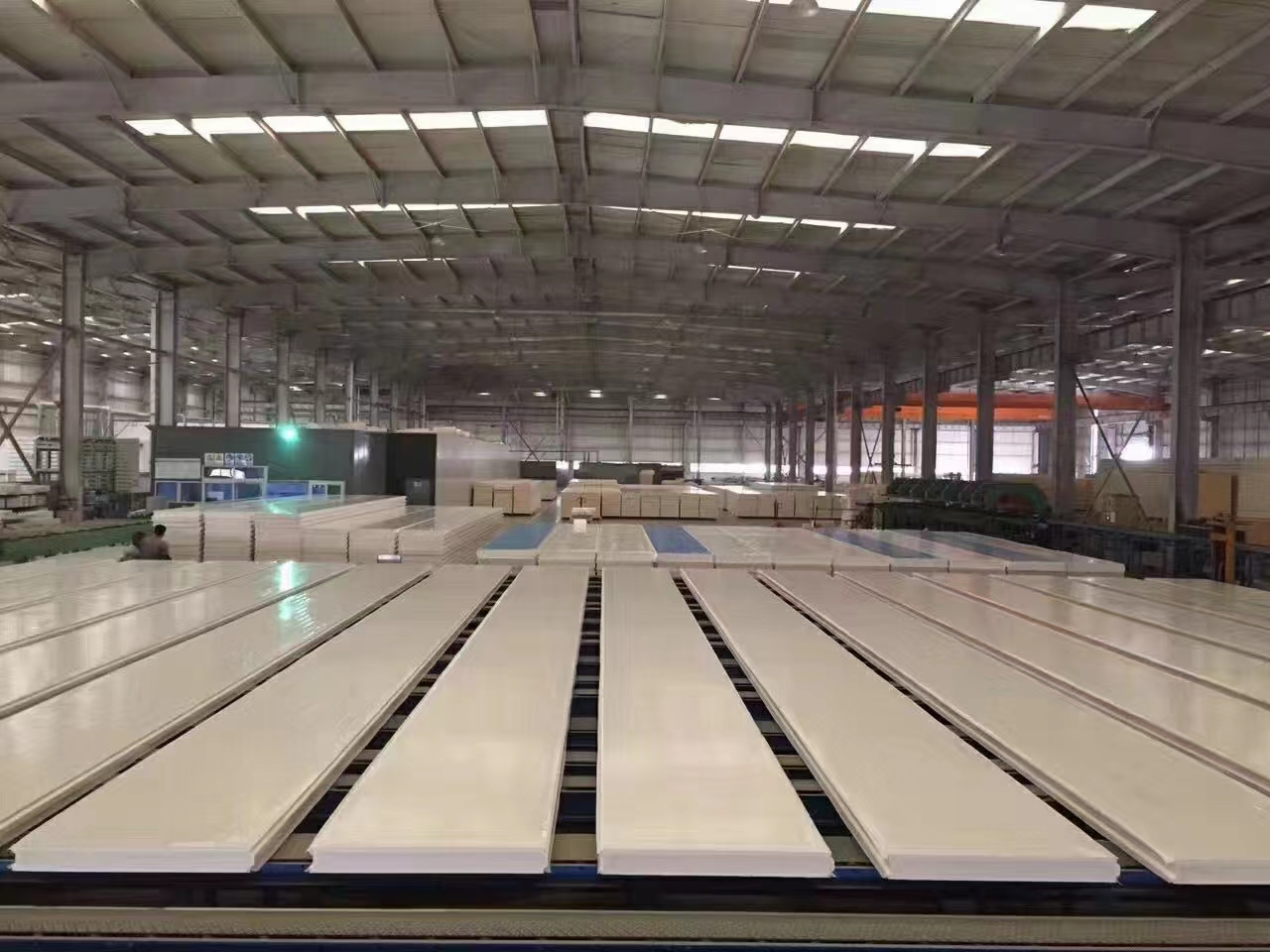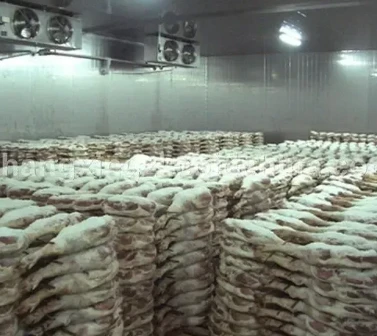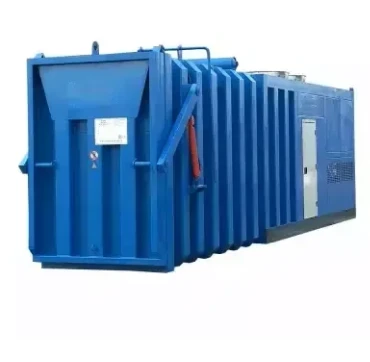Durable Cold Storage Panels for Sale | Superior Insulation
The global cold chain market is projected to reach USD 628.26 billion by 2030, driven by the increasing demand for temperature-sensitive goods in the food, pharmaceutical, and chemical industries. At the heart of this expansion lies a critical component: the cold storage panels for sale. This guide provides an in-depth analysis of insulated cold storage panels, covering everything from technical specifications and manufacturing processes to application case studies, empowering you to make an informed investment in your cold storage infrastructure.
Understanding the Core: What is a Cold Room Panel?
A cold room panel, also known as an insulated sandwich panel, is a high-performance building material designed for constructing temperature-controlled environments. It consists of an insulating core material—typically Polyurethane (PUR) or Polyisocyanurate (PIR)—sandwiched between two metal sheets (facings). This composite structure provides exceptional thermal insulation, structural integrity, and a hygienic surface, making it the gold standard for coolroom panel construction. The effectiveness of these panels is measured by their Thermal Conductivity (K-value) and Thermal Resistance (R-value); the lower the K-value and the higher the R-value, the better the insulation performance.

Technical Specifications: A Deep Dive into Our Insulated Cold Storage Panels
When searching for cold storage panels for sale, the technical specifications are paramount. They dictate the panel's performance, lifespan, and suitability for your specific application. Below is a detailed breakdown of the parameters for our flagship Cold Room Panel.
| Parameter | Specification Details | Industry Significance & Impact |
|---|---|---|
| Product Name | Cold Room Panel / Insulated Sandwich Panel | The fundamental component for building any cold storage facility. |
| Core Material | Polyurethane (PUR) / Polyisocyanurate (PIR) | PIR offers superior fire resistance (B1 class) compared to PUR (B2 class), crucial for safety and insurance compliance. |
| Core Density | 38 - 42 kg/m³ | Higher density ensures better structural strength, insulation, and longevity. It directly impacts the panel's ability to withstand loads and prevent delamination. |
| Panel Thickness | 50mm, 75mm, 100mm, 120mm, 150mm, 200mm | Thickness is chosen based on the required internal temperature. For example, 100mm cold room panels are standard for chillers (0°C to 5°C), while 150mm-200mm are used for freezers (-18°C to -40°C). |
| Thermal Conductivity (K-value) | ≤ 0.022 W/m·K | A low K-value is the hallmark of excellent insulation. It means less heat transfer, leading to significant energy savings and lower operational costs. Complies with ISO standards for thermal insulation. |
| Metal Facing Material | Color-coated Steel (PPGI), Stainless Steel (304, 316), Galvanized Steel | PPGI is cost-effective for general use. Stainless Steel (SS304/316) is required for food processing and pharmaceutical applications due to its superior hygiene and corrosion resistance (FDA compliant). |
| Steel Thickness | 0.4mm - 0.8mm | Thicker steel provides enhanced durability, impact resistance, and structural rigidity. |
| Connection Type | Cam-lock System / Tongue & Groove | Cam-lock systems create airtight seals, preventing thermal bridging and simplifying installation. This is a key feature for high-efficiency coolroom panel construction. |
| Fire Rating | B1 / B2 (GB8624-2012 Standard) | A critical safety feature. B1 (PIR) is self-extinguishing and produces less smoke, often mandated by building codes and insurance providers. |
| Certifications | ISO 9001, CE, SGS | Demonstrates adherence to international quality management, safety, and performance standards, ensuring a trustworthy product. |
| Service Life | 25+ years | High-quality materials and manufacturing processes guarantee a long-term, reliable investment. |
Data-Driven Insights: Visualizing Panel Performance
Data visualization helps clarify the technical advantages of choosing the right panels. The charts below illustrate key performance indicators and market trends related to insulated cold storage panels.
Panel Thickness vs. Thermal Resistance (R-Value)
Core Material Performance Comparison
Cold Storage Panel Application Share
Our State-of-the-Art Manufacturing Process: From Raw Material to Finished Panel
The quality of a cold room panel is a direct result of a meticulous and technologically advanced manufacturing process. We adhere to strict ISO 9001 quality control standards at every stage. Here’s a transparent look at our production line:
Raw Material Inspection
High-grade steel coils and premium polyurethane/polyisocyanurate chemical compounds are rigorously tested for compliance with technical specifications.
Roll Forming
The steel sheets are precisely shaped through a multi-roller forming machine to create the required profiles and strengthen the facings.
High-Pressure Foaming
The insulating core (PUR/PIR) is injected between the steel sheets using a high-pressure mixing head, ensuring uniform density and complete adhesion.
Curing & Lamination
Panels travel through a long, heated double-belt laminator under constant pressure, allowing the foam to cure and bond perfectly to the steel facings.
CNC Precision Cutting
An automated CNC sawing machine cuts the continuous panel to the exact lengths required by the customer's design, ensuring accuracy to the millimeter.
Quality Control & Packaging
Each panel is inspected for dimensional accuracy, surface finish, and core integrity before being protectively filmed and stacked for shipment.

Unmatched Advantages: Why Our Panels are the Superior Choice
Choosing our cold storage panels for sale provides a host of benefits that directly translate to operational efficiency, safety, and long-term value.
Superior Thermal Efficiency
With a K-value as low as 0.022 W/m·K, our panels drastically reduce heat transfer. This results in lower energy consumption for refrigeration units, leading to substantial cost savings of up to 30% annually.
Enhanced Fire Safety
Our PIR core panels achieve a B1 fire rating, meaning they are self-extinguishing and produce minimal smoke. This enhances facility safety, protects valuable inventory, and can lower insurance premiums.
Rapid & Simple Installation
The lightweight nature and innovative cam-lock joining system allow for faster and more economical coolroom panel construction. This reduces labor costs and project timelines significantly.
Exceptional Durability & Hygiene
High-density foam and robust steel facings (including food-grade stainless steel) offer excellent structural strength and resistance to moisture, corrosion, and mold, ensuring a long, hygienic service life.
Eco-Friendly & Sustainable
Our panels are manufactured using CFC-free blowing agents, and their high insulation properties contribute to reducing the carbon footprint of cooling operations. A sustainable choice for a green future.
Full Customization
We offer a wide range of thicknesses, lengths, colors, and surface profiles to meet the precise architectural and functional requirements of any project, from small walk-in coolers to large distribution centers.
Manufacturer Comparison: The XXColdRoom Difference
Not all cold room panels for sale are created equal. The difference lies in the quality of materials, manufacturing precision, and commitment to standards. Here's how we stack up against generic or lower-quality alternatives.
| Feature / Parameter | Generic / Low-Quality Panels | XXColdRoom High-Performance Panels |
|---|---|---|
| Core Material | Often low-density EPS or non-uniform PUR | High-Density (40-42kg/m³) PUR or Fire-Resistant PIR |
| Foam Uniformity | Prone to voids and inconsistent density | Uniform microcellular structure via high-pressure injection |
| Steel Adhesion | Weak bonding, risk of delamination over time | Superior adhesion from controlled lamination process |
| Joint Seal | Simple tongue & groove, prone to thermal leaks | Precision Cam-Lock system for a guaranteed airtight seal |
| Dimensional Accuracy | High tolerance, can be +/- 5mm | CNC-cut with a tolerance of +/- 2mm for perfect fit |
| Fire Rating | Often unrated or basic B3/B2 | Certified B1/B2 fire performance, documented and tested |
| Certifications | None or unverified claims | ISO 9001, CE, SGS, with full traceability |
| Warranty & Support | Limited or non-existent | Comprehensive warranty with expert technical support |

Real-World Experience: Application Case Studies
Our expertise is proven through successful projects across various demanding sectors. These case studies showcase the practical application and performance of our insulated cold storage panels.
Case Study 1: Pharmaceutical Logistics Hub, Belgium
Challenge: A leading pharmaceutical distributor required a 2,000m² facility to store vaccines and biologics at a stable +2°C to +8°C range, with strict regulatory compliance (Good Distribution Practice - GDP) and fire safety standards.
Solution: We supplied 100mm cold room panels with a fire-resistant PIR core (B1-rated) and food-grade PPGI internal facing. The cam-lock system ensured a hermetically sealed environment, crucial for temperature stability. Our technical team provided consultation on the layout to optimize airflow and minimize thermal bridging.
Outcome: The facility passed all GDP audits with ease. Energy monitoring showed a 22% reduction in cooling costs compared to their older facility built with traditional materials. The project was completed 2 weeks ahead of schedule due to the speed of panel installation.
Case Study 2: Seafood Processing Plant, Vietnam
Challenge: A seafood exporter needed to construct a new processing area and a -25°C blast freezer. The environment is highly corrosive due to saltwater and frequent high-pressure washdowns.
Solution: For the processing area (+5°C), we provided 100mm PIR panels with SS304 stainless steel facings. For the blast freezer, we specified 200mm PIR panels to ensure thermal efficiency at low temperatures. The stainless steel surface withstands harsh cleaning chemicals and prevents bacterial growth, meeting HACCP and FDA standards.
Outcome: The client reported zero corrosion or panel degradation after two years of intensive operation. The blast freezer achieves target temperatures 15% faster, improving product throughput and quality.
Authority & Trust: Why Industry Leaders Choose Us
Our commitment to quality, safety, and customer satisfaction is validated by internationally recognized certifications and a long history of successful partnerships. When you choose our cold storage panels for sale, you're choosing a trusted partner.
Ensuring consistent quality management systems.
Compliance with European health, safety, and environmental standards.
Independently verified performance and safety.
Safe for direct contact with food and pharmaceuticals.
Decades of industry leadership and innovation.

Frequently Asked Questions (FAQ) about Cold Room Panels
We've compiled answers to the most common technical questions to help you in your decision-making process.
Both are excellent insulators. The primary difference is fire performance. PUR typically has a B2 or B3 fire rating, meaning it is combustible. PIR has a modified chemical structure that provides superior fire resistance, achieving a B1 rating (self-extinguishing and low smoke). For projects where fire safety is a top priority or required by code, PIR is the recommended choice.
The choice depends on the target temperature and the ambient external temperature. A larger temperature difference requires thicker insulation. As a general rule:
- 50mm - 75mm: For controlled environments or partitions (+10°C and above).
- 100mm: Standard for chillers and medium-temperature rooms (0°C to +5°C).
- 120mm - 150mm: For standard freezers (-18°C to -25°C).
- 200mm: For blast freezers and ultra-low temperature applications (-30°C to -40°C).
A Cam-lock is a mechanical hook-and-pin system embedded within the panel edges. During installation, turning a hex key locks the panels together, pulling them tight to create a continuous, airtight, and structurally sound seal. This system prevents thermal bridging (heat leaks at the joints), which is a major cause of energy inefficiency in poorly constructed cold rooms. It also makes assembly and disassembly much faster and easier.
This depends on the environment inside the cold room.
- Color-coated Steel (PPGI): The most common and cost-effective choice for general storage, logistics, and warehouses.
- Stainless Steel (SS304): The standard for food processing, commercial kitchens, and pharmaceutical applications due to its excellent hygiene, corrosion resistance, and ability to withstand harsh cleaning.
- Stainless Steel (SS316): Used in extremely corrosive environments, such as those with high salinity (coastal areas, seafood processing) or exposure to harsh chemicals.
With proper installation and maintenance, our high-quality insulated cold storage panels are designed to last for over 25 years. The lifespan is a function of the high-density foam core that resists compression and the durable steel facings that protect against physical damage and environmental factors.
Our standard delivery cycle is typically 2-4 weeks from order confirmation, depending on the project size and customization requirements. While we primarily supply the panels, we offer comprehensive installation drawings, guides, and remote technical support to ensure your construction team can assemble the room efficiently and correctly. For large-scale projects, on-site supervision can be arranged.
Our panels contribute to green building certifications in several ways:
- Energy Performance: The exceptional R-values significantly reduce energy consumption for heating and cooling (EA - Energy & Atmosphere credit).
- Materials & Resources: They are durable, have a long service life, and contain recycled content in the steel facings (MR credit).
- Indoor Environmental Quality: Our panels are made with zero ODP (Ozone Depletion Potential) and low GWP (Global Warming Potential) blowing agents and do not off-gas harmful VOCs (IEQ credit).
Your Partner for Next-Generation Cold Storage Solutions
Investing in high-quality cold storage infrastructure is no longer a choice but a necessity for businesses aiming for growth and resilience. By choosing our expertly engineered cold room panels, you are not just buying a product; you are investing in unparalleled thermal efficiency, uncompromising safety, and long-term operational reliability. Our team of experts is ready to assist you in designing a custom solution that meets your exact needs.
Explore the possibilities and secure the best cold storage panels for sale on the market. Contact us today for a detailed consultation and a personalized quote.
References & Further Reading
- Global Cold Chain Alliance (GCCA). (2023). Global Cold Storage Capacity Report. Retrieved from https://www.gcca.org/resources/global-cold-storage-capacity-report
- Pérez-Lombard, L., Ortiz, J., & Pout, C. (2008). A review on buildings energy consumption information. Energy and Buildings, 40(3), 394-398. (Discusses the importance of high-performance insulation in reducing building energy consumption).
- International Organization for Standardization. (2017). ISO 9001:2015 - Quality management systems — Requirements. Retrieved from https://www.iso.org/standard/62085.html
















































































































